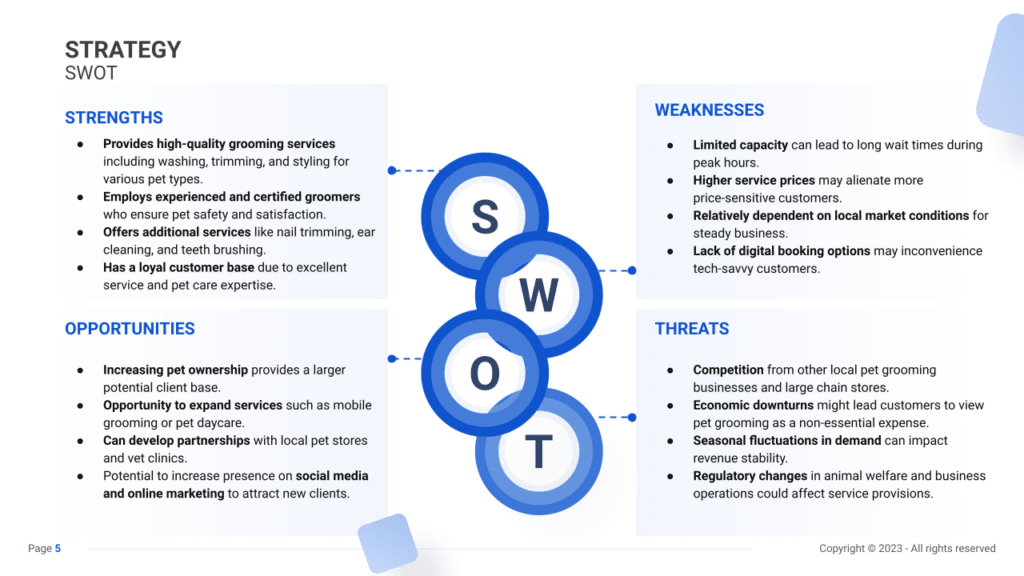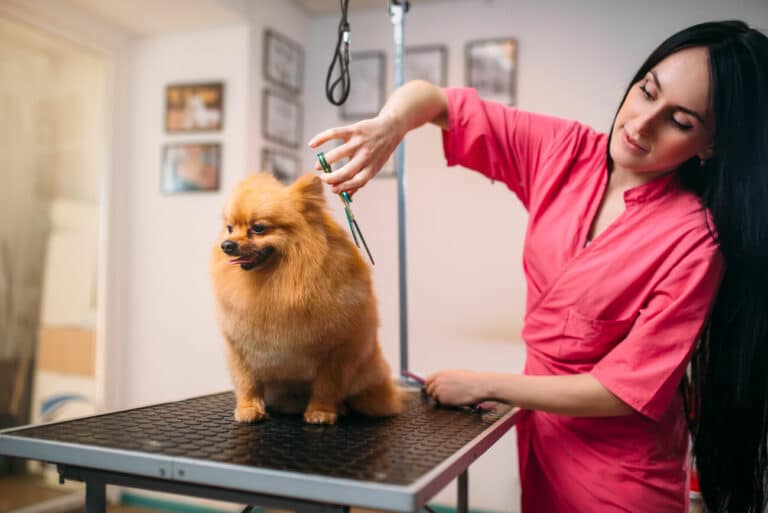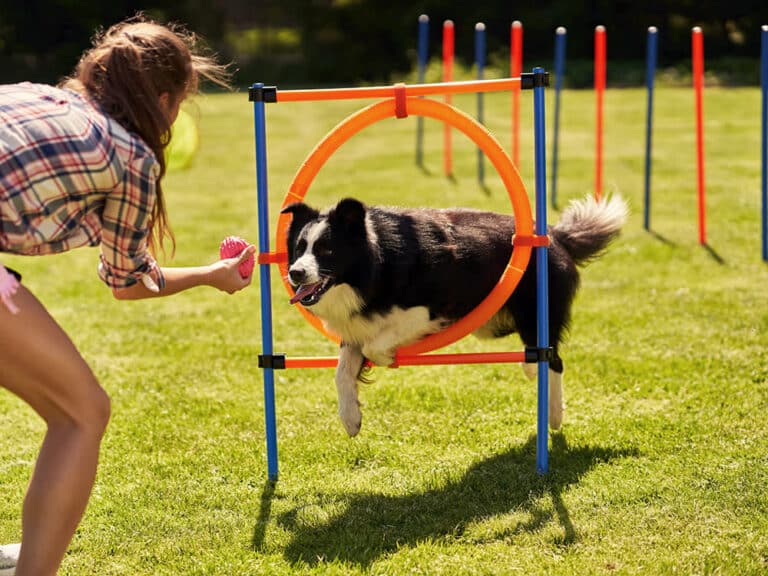How to Prepare a SWOT for a Pet Grooming Business

A SWOT analysis is a fundamental component when preparing a business plan for a pet grooming service. SWOT (Strengths, Weaknesses, Opportunities, and Threats) is a framework that helps groomers evaluate their business from different angles.
While strengths and weaknesses are internal factors within the control of the grooming service, opportunities and threats are external elements that can impact the business.
A SWOT analysis in a business plan provides a clear picture of where your pet grooming service stands in the current market and identifies areas for potential growth and improvement. For instance, strengths could include experienced groomers and a loyal customer base, while weaknesses may involve limited service offerings or a need for advanced grooming equipment.
This article will delve into various examples of strengths and weaknesses, offering pet grooming service owners insights on effectively incorporating them into their business plans.

Strengths
Discover the inherent strengths that set pet grooming services apart, ensuring a top-notch grooming experience for beloved pets.
- Professional Expertise in Pet Care: Pet grooming services boast a team of skilled professionals with expertise in animal care, ensuring a safe and comfortable grooming process.
- Example: Offering specialized grooming services for different breeds showcases the groomers’ expertise, catering to the unique needs of various furry clients.
- Comprehensive Grooming Packages: Pet grooming services often provide comprehensive packages, including bathing, hair trimming, nail clipping, and more, offering convenience and value for pet owners.
- Example: Introducing all-inclusive grooming packages for specific occasions, such as a spa day package, attracts clients seeking a holistic grooming experience for their pets.
- Use of Premium Grooming Products: The use of high-quality grooming products contributes to the health and aesthetics of pets, enhancing the overall grooming outcome.
- Example: Emphasizing the use of organic or hypoallergenic grooming products appeals to pet owners with concerns about their pets’ skin sensitivities.
- Focus on Pet Comfort and Stress Reduction: Pet grooming services prioritize creating a stress-free environment for pets, incorporating calming techniques and gentle handling during grooming sessions.
- Example: Implementing stress-reducing practices, such as aromatherapy or soothing music, contributes to a positive grooming experience for pets.
Weaknesses
Addressing weaknesses is pivotal to refining pet grooming services and ensuring a seamless and satisfactory experience for both pets and their owners.
- Staff Turnover Impact: High staff turnover may lead to inconsistencies in grooming styles and a potential decline in service quality.
- Example: Implementing ongoing training programs for grooming staff, ensuring they stay updated on the latest grooming trends, maintains consistency in service delivery.
- Dependency on Physical Location: A heavy reliance on a physical location may limit accessibility for clients, especially those in remote areas or with busy schedules.
- Example: Introducing a mobile grooming service or partnerships with local pet-friendly businesses expands service reach and caters to clients with mobility constraints.
- Limited Grooming Specialty Services: Offering a limited range of specialty grooming services may restrict the ability to cater to diverse grooming needs.
- Example: Expanding services to include creative grooming, specialized hair coloring, or unique styling options attracts a broader clientele interested in unique grooming experiences.
- Scheduling and Wait Times: Challenges in scheduling appointments and long wait times may lead to frustration among pet owners.
- Example: Implementing an efficient online booking system, offering flexible scheduling options, and providing updates on grooming progress reduce wait times and enhance client satisfaction.
Opportunities
Explore opportunities for growth and innovation within the ever-evolving landscape of pet grooming services.
- Introduction of Spa and Wellness Services: The rising demand for pet wellness presents an opportunity to introduce spa-like grooming services, including massages, aromatherapy, and skincare treatments.
- Example: Offering spa packages with relaxation-focused grooming services provides a unique and indulgent experience for pets, attracting wellness-oriented pet owners.
- Digital Marketing and Online Presence: Leveraging digital platforms for marketing and online booking enhances visibility and accessibility for potential clients.
- Example: Creating engaging social media content, such as before-and-after grooming transformations, encourages online sharing and boosts the service’s online presence.
- Collaboration with Pet Retailers: Collaborating with pet retailers allows for cross-promotion, providing mutual benefits and reaching a broader audience.
- Example: Partnering with local pet stores for joint promotions, such as discounted grooming services with the purchase of certain pet products, strengthens community ties and attracts new clients.
- Expansion of Grooming Services: The opportunity to expand grooming services, including pet dental care, specialized skincare treatments, or unique styling options, caters to diverse client preferences.
- Example: Introducing a dental care add-on service or partnering with a pet dermatologist for specialized skincare services broadens the range of grooming offerings.
Threats
Anticipate and navigate potential threats to ensure the longevity and success of pet grooming services.
- Competition from Home Grooming Kits: The availability of home grooming kits may lead some pet owners to attempt grooming at home, potentially impacting professional grooming service demand.
- Example: Offering online tutorials on proper grooming techniques or hosting workshops to educate pet owners on the benefits of professional grooming encourages informed decision-making.
- Economic Downturn Impact: Economic downturns may affect discretionary spending, potentially leading pet owners to cut back on non-essential services, including professional grooming.
- Example: Implementing loyalty programs, such as discounted grooming packages or referral incentives, promotes client retention during economic challenges.
- Negative Online Reviews: Negative online reviews or social media comments can significantly impact the reputation of pet grooming services, affecting client trust and business viability.
- Example: Establishing a responsive customer service system and addressing concerns publicly and professionally helps mitigate the impact of negative reviews.
- Regulatory Changes in Grooming Standards: Changes in regulations related to grooming standards may pose a threat, requiring adaptability to comply with evolving industry guidelines.
- Example: Staying informed about industry regulations, participating in relevant associations, and investing in ongoing staff training ensure compliance and credibility.





